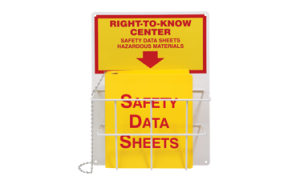 With newly formatted Safety Data Sheets and chemical labels beginning to arrive at worksites, experts recommend employers take the following steps:
With newly formatted Safety Data Sheets and chemical labels beginning to arrive at worksites, experts recommend employers take the following steps:
- Train employees. The deadline to ensure all workers are familiar with the updated labeling and SDS elements was Dec. 1, 2013.
- Get the new SDSs. Take steps, including contacting chemical manufacturers, to ensure you have updated SDSs by June 1 for all chemicals onsite.
- Review the SDSs. When the new SDSs come in, closely examine them and consider whether you have appropriate controls in place for all hazards.
- Update hazcom program. If new hazards are listed on the SDSs, update your hazard communication program to mitigate the risks posed by those hazards.
- Review training. Make sure your employees understand the new labels and SDSs. Refresher training may be necessary.
via GHS: The look of things to come | February 2015 | Safety+Health Magazine.

